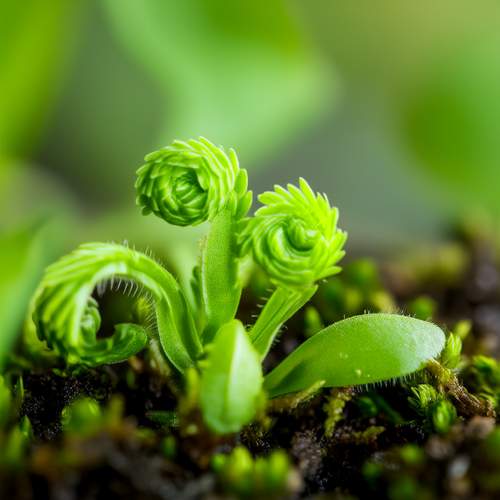The natural world never ceases to amaze with its intricate mechanisms and lightning-fast responses. Among the most fascinating examples is the humble Mimosa pudica, commonly known as the sensitive plant or touch-me-not. Its leaves fold inward and droop when touched, only to reopen minutes later. This rapid movement, often referred to as seismonasty, has long puzzled scientists. Recent breakthroughs, however, have shed light on the incredible speed of bioelectrical signaling that makes this phenomenon possible.
What sets the Mimosa apart from other plants is its ability to react within seconds. While most plant movements occur over hours or days—think sunflowers tracking the sun—the Mimosa's response is nearly instantaneous. Researchers have discovered that this rapid reaction is driven by a sophisticated system of electrical impulses traveling through specialized tissues. These impulses trigger changes in water pressure within the plant's cells, causing the leaves to collapse.
The speed of this bioelectrical conduction rivals some animal nervous systems. Studies using microelectrodes have recorded action potentials moving through the Mimosa's stem at speeds approaching 1-3 centimeters per second. While this may seem slow compared to human nerve impulses (which travel at about 100 meters per second), it's remarkably fast for a plant. This puts the Mimosa in an elite group of organisms capable of rapid movement through electrical signaling.
What's particularly intriguing is how the plant achieves this without nerves or muscles. The Mimosa's vascular bundles contain specialized motor cells that lose turgor pressure when electrically stimulated. This sudden loss of rigidity in certain cells while others remain firm creates the folding motion. The entire process is a masterpiece of biomechanical engineering, where electrical signals translate directly into physical movement.
Recent experiments have revealed another layer of complexity—the plant can modify its sensitivity based on experience. Repeated stimulation leads to slower responses, suggesting a form of primitive memory. This habituation behavior, previously thought to exist only in animals, indicates that plants might process information in ways we're only beginning to understand. The Mimosa's bioelectrical system appears more sophisticated than a simple on-off switch.
Scientists are now investigating whether similar rapid signaling occurs in other plant species. Preliminary findings suggest that while most plants use slower hormonal signaling for movement, some carnivorous plants like the Venus flytrap might employ comparable electrical mechanisms. The Mimosa, however, remains the gold standard for speed, with its leaf-folding response serving as a visible indicator of invisible electrical activity.
The implications of this research extend beyond botanical curiosity. Understanding how plants transmit signals could inspire new technologies in soft robotics and adaptive materials. Engineers are particularly interested in creating materials that change shape in response to electrical stimuli without complex mechanical parts. The Mimosa's elegant solution—using water pressure changes triggered by electricity—offers a blueprint for energy-efficient actuators.
As research continues, the Mimosa pudica stands as a testament to nature's ingenuity. Its rapid leaf movements, once a charming oddity, have revealed profound insights into plant electrophysiology. The plant's ability to combine speed, precision, and adaptability without nerves or muscles challenges our understanding of what living organisms can achieve. In the quiet drama of a folding leaf, we witness one of nature's most exquisite demonstrations of bioelectrical communication.

By /May 21, 2025

By /May 21, 2025

By /May 21, 2025

By /May 21, 2025

By /May 21, 2025

By /May 21, 2025

By /May 21, 2025

By /May 21, 2025

By /May 21, 2025

By /May 21, 2025

By /May 21, 2025

By /May 21, 2025

By /May 21, 2025

By /May 21, 2025

By /May 21, 2025

By /May 21, 2025

By /May 21, 2025

By /May 21, 2025

By /May 21, 2025

By /May 21, 2025